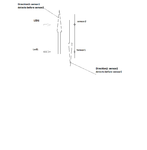sabkumar.r
Junior Member level 2
Hi,
My aim is to make a simple sensor that detects an Object's Movement. I have an IR LED with a photodiode as a detector. I intend to make IR radiation from the LED fall on the Photodiode always. So, when an obstacle comes in between, there will be a change in the diode current which can be used to detect the obstacle. Is my approach correct??
I am just trying to learn and am doing this as a hobby.Any help will be really appreciated.
Thanks,
Sabareesh
My aim is to make a simple sensor that detects an Object's Movement. I have an IR LED with a photodiode as a detector. I intend to make IR radiation from the LED fall on the Photodiode always. So, when an obstacle comes in between, there will be a change in the diode current which can be used to detect the obstacle. Is my approach correct??
I am just trying to learn and am doing this as a hobby.Any help will be really appreciated.
Thanks,
Sabareesh
